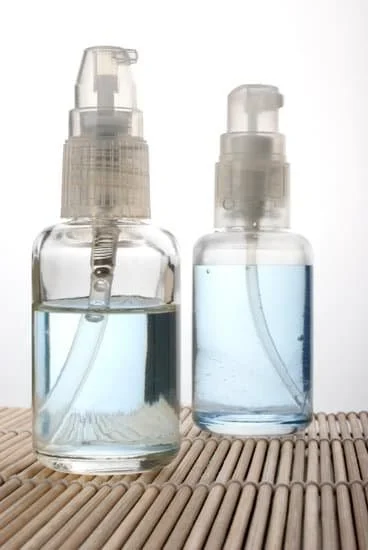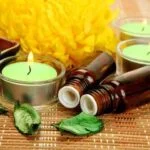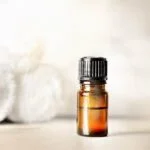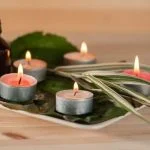Aromatherapy has become increasingly popular as people seek natural alternatives to improve their physical and emotional well-being. As the demand for aromatherapy rises, so does the need for qualified instructors who can teach others about the healing properties of essential oils. This article will guide you on how to teach an aromatherapy class, providing insights into the benefits of becoming an instructor and how to create a rewarding career in this field.
The popularity of aromatherapy can be attributed to its holistic approach to health and wellness. Essential oils have been used for centuries to address various ailments and promote overall relaxation and balance. In today’s fast-paced world, more individuals are seeking natural remedies that can alleviate stress, improve sleep quality, boost mood, and support a healthy immune system.
Teaching an aromatherapy class not only allows you to share your passion and knowledge but also provides you with a fulfilling career path. By educating others about essential oils and their therapeutic benefits, you have the opportunity to empower individuals with self-care tools that can transform their lives. Moreover, as awareness grows about the importance of holistic well-being, the demand for professional aromatherapists and instructors is expected to continue rising.
In the following sections of this article, we will explore essential qualifications needed to become an aromatherapy teacher, tips for creating an inspiring learning environment, strategies for designing engaging lessons plans, recommended teaching materials, classroom management techniques, marketing strategies to attract students, and much more. So if you’re ready to embark on a journey of imparting valuable knowledge while making a difference in people’s lives through aromatherapy education, keep reading.
Preparing for Success
To become a successful aromatherapy teacher, it is crucial to possess the necessary qualifications and knowledge in this field. Teaching aromatherapy requires more than just a passion for essential oils; it requires expertise and credibility. In this section, we will delve into the essential qualifications and certifications needed to become an aromatherapy instructor, as well as the importance of deepening your understanding of aromatherapy principles and essential oils.
Firstly, acquiring relevant certifications is vital to establish yourself as a qualified aromatherapy teacher. Look for reputable organizations that offer certification programs specifically designed for educators in this field. These programs typically cover topics such as anatomy and physiology, safety guidelines, therapeutic properties of essential oils, blending techniques, and client consultation. Completing these certifications not only enhances your knowledge but also instills confidence in potential students seeking reliable instructors.
Apart from certifications, having a thorough understanding of aromatherapy principles and essential oils is equally important. Educators must be well-versed in the history and origins of aromatherapy, its various applications in wellness and healthcare, different extraction methods used for essential oils, potential contraindications, proper storage practices, and the science behind their therapeutic effects. Developing expertise in these areas allows you to provide accurate information to your students and answer their questions confidently during class sessions.
Continuing education is another aspect that should not be overlooked in maintaining your expertise as an aromatherapy teacher. It is crucial to stay updated with the latest research, new developments in the field of aromatic medicine, emerging trends in aromatherapeutic practices, and any advancements related to essential oil safety or usage guidelines. Participating in workshops, attending conferences or seminars led by established experts can help expand your knowledge base while also allowing networking opportunities with other professionals.
By ensuring you have the essential qualifications through relevant certifications and constantly expanding your knowledge base on all aspects of aromatherapy principles and essential oils, you are setting yourself up for success as an aromatherapy teacher. These qualifications and knowledge not only add credibility but also give you the necessary foundation to effectively guide and educate your students, ensuring they receive accurate, safe, and reliable information throughout their learning journey.
Choosing the Perfect Venue
When it comes to teaching an aromatherapy class, selecting the right venue is crucial in creating an inspiring learning environment. The venue plays a significant role in ensuring that students can fully engage with the subject matter and have a valuable educational experience. Here are some tips for choosing the perfect venue for your aromatherapy class:
- Consider the space and capacity: Look for a venue that can comfortably accommodate the number of students you anticipate having in your class. Ensure that there is enough room for everyone to move around freely during hands-on activities and practical demonstrations.
- Seek a conducive learning environment: Look for venues that provide a calm and peaceful setting. Aromatherapy is all about relaxation and well-being, so it is important to choose a space that aligns with these principles. Consider venues with natural light, good ventilation, and comfortable seating arrangements.
- Access to necessary amenities: Make sure that the venue has access to necessary amenities such as restrooms, sinks, and storage areas. These amenities are essential for conducting practical exercises and demonstrations involving essential oils and other aromatherapy tools.
- Soundproofing and acoustics: Check if the venue has adequate soundproofing to minimize any distractions from external noise or nearby activities. Additionally, consider the acoustics of the space, as clear communication between you and your students is vital.
To enhance the overall learning experience, consider incorporating elements of aromatherapy into the venue itself. Set up aromatherapy diffusers with calming essential oils to create a relaxing ambiance. You could also incorporate natural elements like plants or flowers to add freshness and beauty to the space.
By carefully choosing the perfect venue for your aromatherapy classes, you can create an inspiring learning environment that allows your students to fully immerse themselves in their education journey.
| Tips for Choosing the Perfect Venue: |
|---|
| Consider the space and capacity |
| Seek a conducive learning environment |
| Access to necessary amenities |
| Soundproofing and acoustics |
Structuring the Curriculum
When teaching an aromatherapy class, it is crucial to have a well-structured curriculum that encompasses all the essential components of aromatherapy education. This section will outline the key elements that should be included in your curriculum to ensure a comprehensive learning experience for your students.
Foundational Knowledge
The foundation of any aromatherapy class should be built upon providing students with a solid understanding of the history, principles, and concepts of aromatherapy. Start by introducing the origins and evolution of aromatherapy, its cultural significance, and its various applications. Teach your students about the different methods of extraction and production of essential oils, as well as their chemical composition.
Next, delve into the therapeutic properties of essential oils. Educate your students on how different essential oils affect the mind, body, and spirit. Cover topics such as safety precautions, dilution ratios, contraindications, and potential interactions with medications. Ensure that your students are knowledgeable about carrier oils and other types of bases commonly used in blending essential oils.
Practical Skills
While theoretical knowledge is important, practical skills are equally crucial in an aromatherapy class. Incorporate hands-on activities to give your students direct experience with blending techniques and application methods. Provide them with ample opportunities to practice creating their own blends for various purposes such as relaxation, skincare, or respiratory support.
Demonstrate proper techniques for making diffuser blends, massage oils, bath salts, and other aromatic products. Teach them how to conduct a thorough client consultation to determine individual needs and customize treatment plans accordingly. Additionally, guide them in conducting case studies to develop their analytical thinking skills and ability to solve real-life aromatic challenges.
Evaluation and Assessment
To ensure that your students are gaining a deep understanding of aromatherapy principles and skills, it is vital to include evaluation and assessment methods in your curriculum. Regular assessments such as quizzes, tests, or practical demonstrations can help gauge their progress and identify areas of improvement. Provide constructive feedback to guide them towards mastery of the subject matter.
Consider incorporating a final project or research assignment that allows students to apply their knowledge and showcase their creativity. Encourage them to explore specific topics within aromatherapy that align with their interests and passions. This will not only enhance their learning experience but also foster a sense of ownership and accomplishment.
By structuring your aromatherapy class curriculum around these essential components, you can ensure that your students receive a well-rounded education in the field of aromatherapy. Remember to cater to different learning styles, provide plenty of opportunities for practical application, and continuously assess your students’ progress throughout the course.
Developing Engaging Lesson Plans
When teaching an aromatherapy class, designing effective lesson plans is crucial to engage students and enhance their learning experience. By incorporating various strategies that cater to different learning styles, you can captivate your students and create a dynamic classroom environment. Here are some tips to develop engaging lesson plans for your aromatherapy classes:
- Promote Active Participation: Encourage active participation by incorporating practical exercises and hands-on activities. For example, you can organize scent identification games or create opportunities for students to blend their own essential oil recipes. This not only allows students to apply their knowledge but also deepens their understanding of aromatherapy principles through experiential learning.
- Incorporate Interactive Discussions: Foster meaningful discussions by including group work or partner activities in your lesson plan. This encourages students to exchange ideas, ask questions, and share their personal experiences with essential oils. You can incorporate case studies where students analyze real-life scenarios and discuss potential solutions using their knowledge of aromatherapy.
- Utilize Multimedia Resources: Make use of multimedia resources such as videos, slideshows, or online demonstrations to complement your teaching materials. These visual aids help keep students engaged and provide additional opportunities for them to learn from different perspectives. Additionally, consider inviting guest speakers who can share their expertise and insights on specific topics related to aromatherapy.
- Adapt to Different Learning Styles: Recognize that students have different learning styles – visual, auditory, kinesthetic – and accommodate these preferences in your lesson plans. For visual learners, include diagrams or charts that visually represent the information being taught. Auditory learners may benefit from listening exercises or guided meditations featuring essential oils. Kinesthetic learners could engage in hands-on activities like creating massage blends or conducting aroma tests.
By implementing these strategies into your lesson plans, you can ensure that all students actively participate in the learning process and find personal connections with the material. Remember that flexibility is key, as you may need to adjust your plans based on the specific needs and interests of each class. Ultimately, creating engaging lesson plans will contribute to a more effective and enjoyable aromatherapy educational experience for both you and your students.
Choosing the Right Teaching Materials
When teaching an aromatherapy class, it is important to have the right teaching materials to support the learning process. These materials can include recommended books, online resources, and tools that enhance the understanding and practical application of aromatherapy principles. By incorporating these resources into your curriculum, you can ensure that your students have access to reliable information and the necessary tools for success.
Recommended Books and Resources
One of the first steps in choosing the right teaching materials is selecting recommended books that cover a wide range of topics within aromatherapy. Look for books written by reputable authors with extensive knowledge and experience in the field. Some popular choices among aromatherapy instructors include “The Complete Book of Essential Oils and Aromatherapy” by Valerie Ann Worwood, “Aromatherapy for Health Professionals” by Shirley Price and Len Price, and “The Healing Intelligence of Essential Oils” by Kurt Schnaubelt.
In addition to books, there are numerous online resources available that can supplement your teaching materials. Reputable websites such as the National Association for Holistic Aromatherapy (NAHA), the Alliance of International Aromatherapists (AIA), and various academic institutions provide valuable information on essential oils, safety guidelines, research studies, blending techniques, and more. Encourage your students to explore these resources outside of class to deepen their understanding and expand their knowledge.
Aromatherapy Tools
Incorporating hands-on demonstrations and practical exercises into your aromatherapy class is crucial for helping students gain a deeper understanding of essential oils and their applications. To facilitate these activities, it is important to have high-quality aromatherapy tools on hand. This includes diffusers for demonstrating different diffusion methods, carrier oils for dilution purposes, glass droppers for accurate measurement, mixing bowls or bottles for blending exercises, and ample supplies of essential oils.
When choosing essential oils for your class, opt for reputable brands that prioritize quality and purity. Look for oils that are certified organic and undergo rigorous testing to ensure their therapeutic properties. Providing students with access to a range of essential oils will allow them to experience different scents and learn about their unique properties and benefits.
By carefully selecting recommended books, online resources, and aromatherapy tools, you can create a well-rounded learning experience for your students. These materials will not only enhance their understanding of aromatherapy but also provide them with valuable resources they can refer back to even after the class has ended.
Cultivating a Positive Learning Environment
Creating a positive learning environment is crucial for effective classroom management in aromatherapy classes. A positive atmosphere not only encourages collaboration and respect but also enhances the overall learning experience for students. To cultivate such an environment, instructors can employ several strategies.
Firstly, it is important to establish clear expectations and guidelines from the beginning of the class. By setting clear boundaries and rules, students will understand what is expected of them and how to conduct themselves during class sessions. Communicating these expectations in a respectful manner helps promote a sense of accountability and mutual understanding within the classroom.
Secondly, fostering open communication between the instructor and students contributes to a positive learning environment. Encouraging students to share their thoughts, ask questions, and engage in discussions creates an inclusive atmosphere where every student feels valued and heard. Active listening is key here-to show genuine interest in students’ perspectives fosters trust and encourages productive dialogue.
Furthermore, incorporating collaborative activities and group work can enhance engagement among students while promoting teamwork skills. Students can be encouraged to work together on projects or participate in role-playing exercises that simulate real-life scenarios related to aromatherapy practices. This not only promotes active participation but also allows for different learning styles to be accommodated within the classroom.
Effective conflict resolution is vital in maintaining a positive learning environment as well. Instances of disagreements or tension may arise amongst students during discussions or group activities, so it is essential for instructors to address conflicts promptly and impartially. Encourage respectful listening and facilitate dialogue between students involved in conflicts, emphasizing empathy and understanding as tools for resolving issues.
Overall, cultivating a positive learning environment requires intentional effort from the instructor. By establishing clear expectations, encouraging open communication, facilitating collaboration among students, and addressing conflicts with empathy and fairness, instructors can create an atmosphere conducive to effective teaching and learning in aromatherapy classes.
Promoting Your Aromatherapy Classes
Once you have prepared your aromatherapy class and chosen the perfect venue, it’s time to focus on promoting your classes and attracting students. In this section, we will explore various marketing techniques that can help you effectively reach your target audience and fill up your classes.
- Utilize Social Media: Take advantage of social media platforms like Facebook, Instagram, Twitter, and LinkedIn to promote your aromatherapy classes. Create engaging posts that highlight the benefits of aromatherapy and the unique aspects of your classes. Use captivating imagery and share testimonials from previous students to build credibility. Engage with your followers by responding to comments and inquiries promptly.
- Targeted Advertising: Consider investing in targeted advertising to reach a wider audience who may be interested in aromatherapy. Platforms like Facebook Ads or Google AdWords allow you to tailor your ads based on demographics, interests, and location. This way, you can ensure that your advertisements are seen by individuals who are more likely to be interested in enrolling in an aromatherapy class.
- Collaborations with Wellness Centers: Reach out to local wellness centers, spas, yoga studios, or holistic health practitioners for potential collaborations. Offer to provide free informative sessions or workshops related to aromatherapy as a way to promote your classes. This not only helps you gain exposure but also establishes yourself as an expert in the field.
- Compelling Class Descriptions: Craft enticing class descriptions that clearly outline what students can expect from your aromatherapy classes. Highlight the unique aspects of your curriculum, such as hands-on experiences or guest lectures from industry professionals. Use language that appeals to potential students’ desires for self-care, relaxation, and holistic wellness.
- Testimonials and Introductory Discounts: Solicit testimonials from previous students who have attended your aromatherapy classes and showcase them on your website or social media platforms. Positive reviews and feedback can greatly influence potential students’ decision to enroll. Additionally, consider offering introductory discounts or special packages for first-time students to incentivize enrollment.
Remember, effective marketing is an ongoing process. Continually evaluate the success of your marketing strategies and make adjustments as needed to attract a steady stream of students to your aromatherapy classes. By implementing these marketing techniques, you will increase awareness about your classes and create a thriving learning environment for aspiring aromatherapy enthusiasts.
Conclusion
In conclusion, teaching an aromatherapy class not only provides a fulfilling career but also offers the opportunity to empower others through knowledge and education. As discussed throughout this article, there is a growing demand for qualified aromatherapy instructors due to the increasing popularity of aromatherapy. By becoming an instructor, you can contribute to meeting this demand and make a meaningful impact in the lives of your students.
To be successful in teaching aromatherapy, it is important to have the necessary qualifications and deep understanding of aromatherapy principles and essential oils. This will allow you to confidently guide your students on their journey towards becoming skilled practitioners in their own right. Additionally, choosing the perfect venue that creates an inspiring learning environment and structuring a comprehensive curriculum that covers both foundational knowledge and practical skills are crucial elements for creating engaging classes.
Furthermore, cultivating a positive learning environment and effectively managing the classroom dynamics play significant roles in the success of your aromatherapy classes. By fostering collaboration, respect, and inclusiveness within your classroom, you can ensure that each student feels supported in their learning journey. Lastly, marketing techniques such as social media promotion, targeted advertising, and collaborations with wellness centers can help you attract students to your classes.
Frequently Asked Questions
How do you explain aromatherapy?
Aromatherapy is a complementary therapy that utilizes aromatic plant extracts, known as essential oils, to promote health and well-being. These essential oils are usually obtained through distillation or extraction methods from various parts of plants such as flowers, leaves, bark, or roots.
The highly concentrated oils are then used in different ways like inhalation, topical application, or even ingestion (in some cases) to stimulate the senses and support physical and emotional wellness. Aromatherapy is believed to work by delivering the therapeutic properties of the essential oils directly to our body’s systems via olfactory receptors or absorption through the skin.
What are the 4 essential oils for smell training?
The four essential oils commonly used for smell training are rosemary oil, eucalyptus oil, lemon oil, and clove oil. Smell training aims to help individuals who have experienced a loss or impairment in their sense of smell regain their olfactory abilities.
These particular oils are selected for their strong and distinct scents to provide a range of smells that can stimulate the olfactory nerves effectively during smell training exercises. It is important to note that each person’s response to smell training can vary, so it is crucial to consult with a healthcare professional before beginning any scent-based therapy.
How do you learn to mix essential oils?
Learning to mix essential oils requires knowledge of each oil’s properties, characteristics, and potential interactions when combined. Understanding the basics of aromatherapy chemistry is beneficial for creating balanced blends with specific therapeutic effects.
This involves learning about top notes (lighter and faster-evaporating oils), middle notes (harmonizing agents), and base notes (heavier and slower-evaporating oils) that form a fragrance pyramid in scent blending recipes.

Are you looking for a natural way to improve your health and wellbeing?
If so, aromatherapy may be the answer for you.




